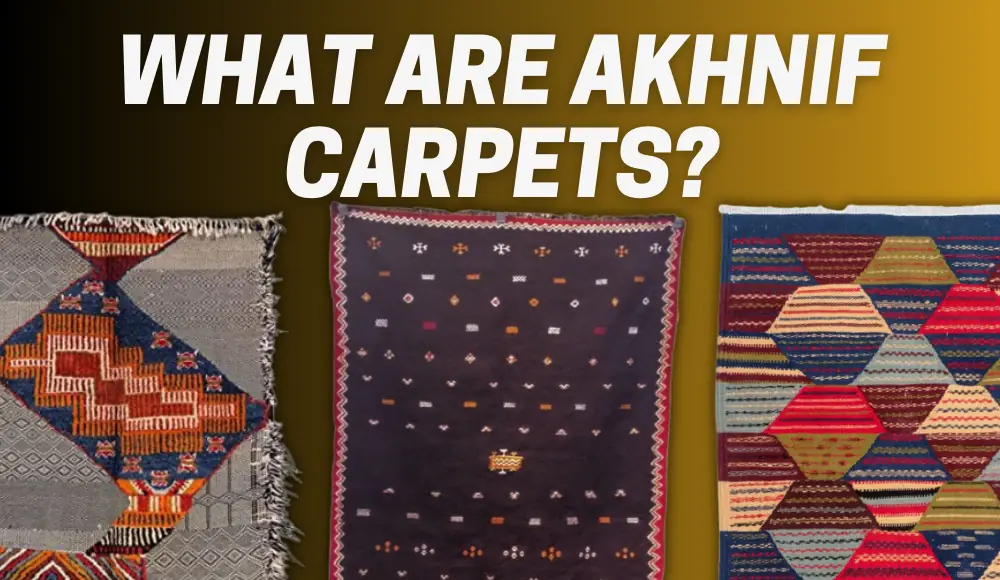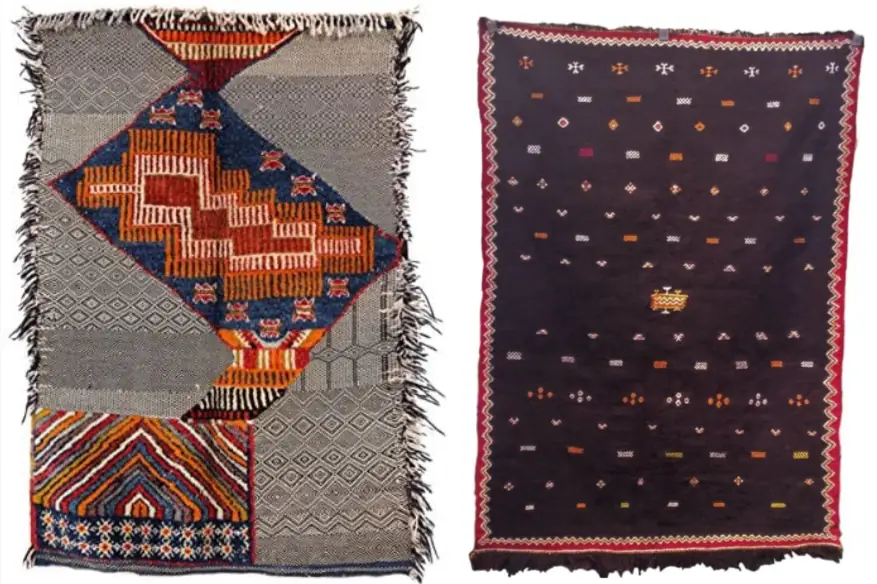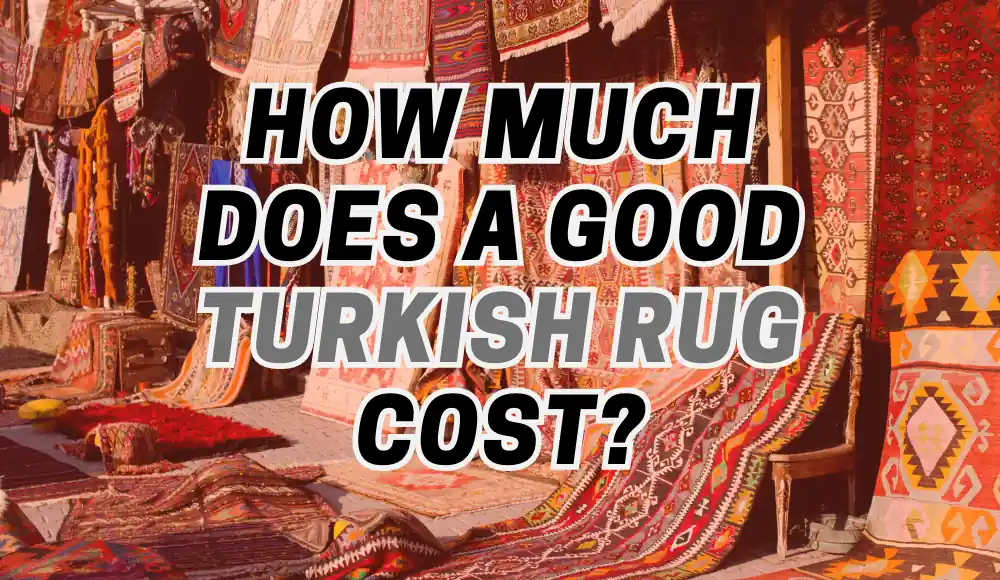The remarkable textiles – Akhnif carpets – are meticulously crafted by the skilled hands of the Akhnif tribe in the Atlas Mountains in Morocco. They embody the artistic prowess and storytelling capabilities of Moroccan weavers.
With a harmonious blend of Berber and Moroccan aesthetics, Akhnif carpets are not merely floor coverings but woven masterpieces that depict a vibrant tapestry of colors, patterns, and symbols. Rooted in ancient techniques passed down through generations, these Berber Moroccan rugs serve as windows into the tribe’s history, beliefs, and way of life.
Let’s go on a journey through the enchanting world of Akhnif carpets, exploring their origins, craftsmanship, and the profound cultural significance they hold for Morocco and beyond.
What are Akhnif Carpets?
First things first.
Akhnif clothing
Akhnif refers not only to a Berber tribe and handmade Moroccan Berber rug but also to antique Moroccan clothing.
Akhnif is a semi-circular garment intricately woven to conform to the body’s shape when worn. It was worn in southern Morocco until the 1950s.
An Akhnif is a piece of wide hooded clothing (cloak) worn by certain Moroccan Berber tribes and is made of wool, often goat hair. The motif patterns of Akhnif often have an eye on the back, which is intended to ward off the evil eye.
Another name for the Berber Akhnif cloak in North Africa is burnous which is worn by men.

Akhnif Carpets
The flatweave Akhnif rugs and carpets have been produced by Amazigh (Berber) women for generations.
According to different sources, the origin and spread of Akhnif rugs refer to the Taznakht town in Morocco and Ait Chedaoui.
The carpets are often characterized by their unique geometric patterns and use of natural materials, such as wool. They were traditionally used as floor coverings and blankets to keep warm during cold winter months.
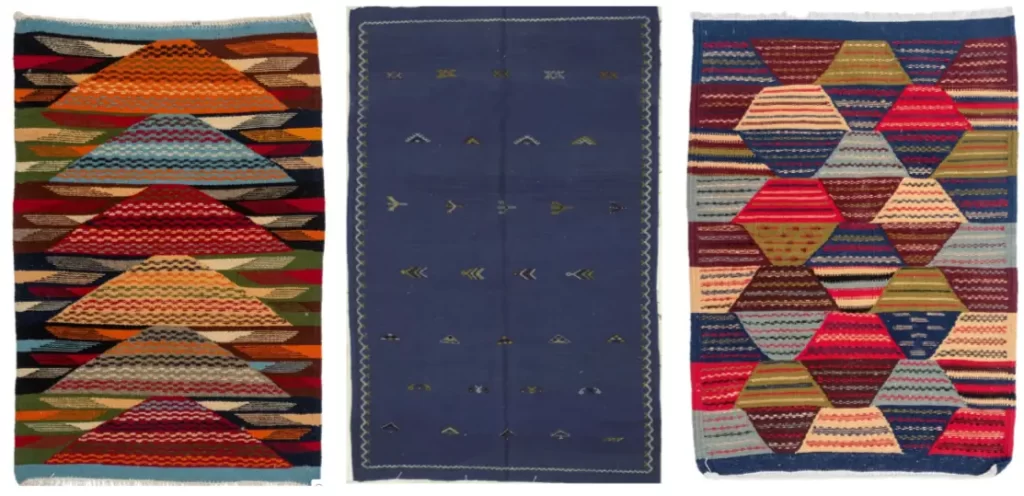
The Importance of Akhnif Carpets in Moroccan Culture
Akhnif carpets have an important role in Moroccan culture and are recognized as some of the finest examples of Berber craftsmanship.
Furthermore, Akhnif carpets serve as a symbol for preserving Berber heritage and cultural identity.
In recent years, there has been increased recognition for these intricate artworks globally due to their unique designs and patterns that bear deep cultural meaning that reflects the rich history and traditions of Morocco’s indigenous population.
Design and Characteristics: A Closer Look at Akhnif Carpets
Akhnif carpets are known for their unique geometric patterns and color schemes. The designs are a representation of the Berber culture and its traditions.
Unlike most carpets, which feature floral or pictorial motifs, Akhnif carpets employ a unique language of symbols intertwined with each other in a geometrical form.
The patterns used in this Akhnif tribal carpet often represent protection from evil spirits, and the beauty of nature.
The use of natural materials such as wool is another distinguishing characteristic of Akhnif carpets. These materials are sourced locally and hand-processed to ensure high quality.
Wool is gathered from local sheep breeds which are raised in the High Atlas Mountains. The wool is then spun into yarn using traditional tools such as the spindle and distaff to create yarns that are soft, strong, and durable.
Akhnif carpets stand out for being handwoven by skilled artisans who have passed on their expertise through generations. The craft has become an essential part of Berber culture, particularly for women who often weave these carpets in their homes for extra income.
These women have developed a deep understanding of weaving techniques which results in rugs that have excellent quality and durability.
Each carpet takes weeks or even months to complete depending on its size, complexity, knot density per square inch (KPSI), and intricacy of design – all done meticulously by hand without the use of machines or any modern technology.
Production Process
Gathering and Cleaning Wool from Local Sheep
The production of an Akhnif carpet begins with the gathering of wool from local sheep in the High Atlas Mountains.
The wool is then cleaned by hand using traditional techniques that have been passed down from generation to generation.
This process involves soaking the wool in water and then beating it against a hard surface to remove any dirt or debris.
Spinning the Wool into Yarn Using Traditional Tools
Once the wool has been cleaned, it is spun into yarn using traditional tools such as a spindle or a drop spindle.
The spinner will use their hands to twist the fibers together, creating a strong and durable yarn.
This process can take several days depending on how much yarn is needed for the carpet.
Dyeing the Yarn with Natural Dyes Made from Plants, Minerals, and Insects
The next step in the production process is dyeing the yarn with natural dyes made from plants, minerals, and insects. This is a time-consuming process that requires skill and patience.
Each color requires different materials and techniques to achieve the desired shade. For example, red can be achieved by using madder root while yellow can be achieved by using saffron.
Weaving the Carpet on a Loom Using Traditional Techniques
After all of these steps have been completed, it’s time to weave!
The weaver will use a traditional loom to carefully create each knot of the carpet by hand. The weaver must pay close attention to detail in order to ensure that each knot is tight and uniform throughout.
This entire process can take months depending on how large or intricate the design of the carpet is. Overall, making an Akhnif Moroccan Berber rug requires immense skill and dedication to tradition.
From gathering sheep’s wool all the way through weaving the finished product, each step is done by hand and with great care. It’s no wonder that these beautiful carpets are a symbol of Moroccan culture and tradition.
Significance in Moroccan Culture
Moroccan culture is deeply rooted in its history and traditions. One of the most significant symbols of Moroccan culture is the Akhnif carpet, which has been a part of Berber heritage for centuries. These carpets are not only beautiful works of art, but they also hold great cultural significance.
What is the History of the Moroccan Berber Rug?
Moroccan Berber rugs have a rich history dating back centuries.
These rugs were traditionally woven by Berber tribeswomen from wool and dyed with natural pigments, creating intricate designs and patterns that reflected the tribe’s history, culture, and way of life.

Each rug was unique and served a practical purpose, from keeping homes warm to being used in traditional ceremonies.
Today, these rugs continue to be treasured for their beauty and symbolism, with many modern designers incorporating them into contemporary interior designs.
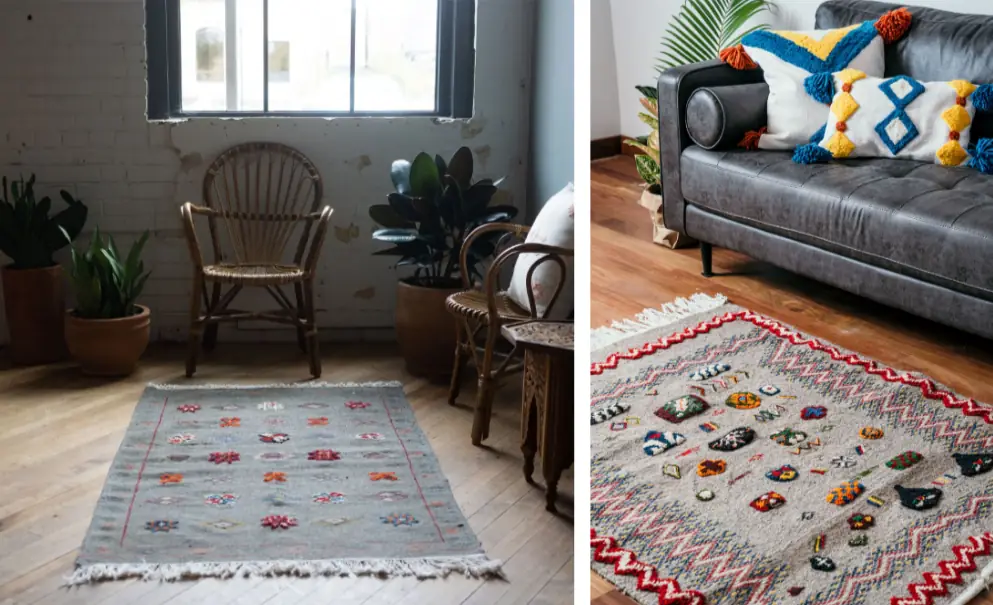
From the rugged landscapes of the Atlas Mountains to the bustling souks of Marrakech, the Moroccan Berber rug remains a vibrant symbol of the country’s rich artistic heritage.
Role in Preserving Berber Heritage
Handmade Akhnif carpets play an important role in preserving Berber heritage. Not only do they represent traditional weaving techniques that have been passed down through generations, but they also serve as a source of income for many rural communities.
By purchasing these carpets, consumers are supporting local artisans and helping to keep ancient traditions alive.
In addition, owning an authentic handmade Akhnif carpet is a way to connect with Moroccan culture and history, adding a touch of authenticity to any home decor.
Contemporary Use and Market Value
Increasing demand for authentic handmade carpets
In recent years, there has been a growing demand for authentic handmade carpets, particularly those made in traditional ways.
This trend has resulted in a renewed interest in Akhnif carpets and other Berber rugs such as Beni Mrirt, Beni Mguild, Boujad, Beni Ourain, and Azilal which are prized for their unique designs and high-quality craftsmanship.
One reason for the increased demand is the desire for authenticity.
Many people are looking to decorate their homes with items that have cultural significance and tell a story.
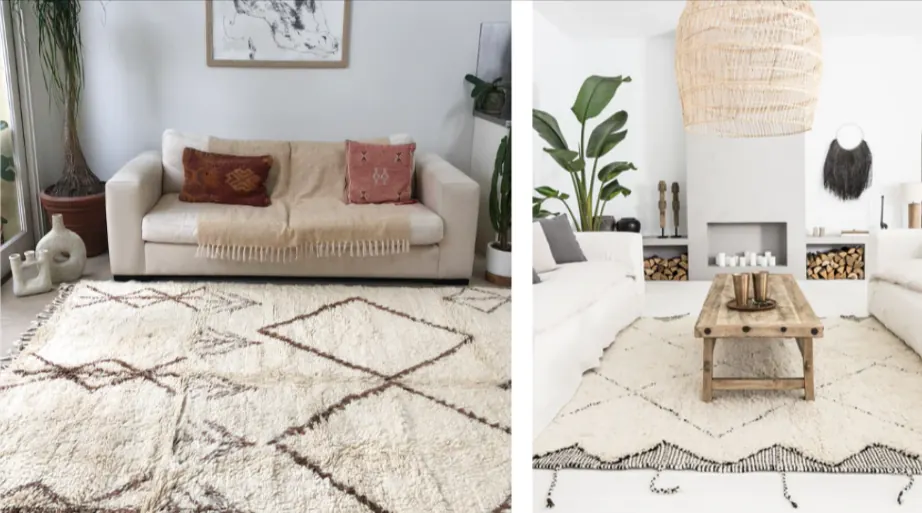
Handmade rugs like Akhnif carpets fit this bill perfectly as they are not only functional pieces but also works of art that add personality to any space.
Why is Moroccan Rug so Expensive?
Factors affecting market value
The market value of Akhnif carpets is influenced by several factors such as the quality of materials used, the craftsmanship involved in making them, and their rarity.
Handmade rugs that use natural dyes and high-quality wool tend to fetch higher prices than those made with synthetic materials.
Another factor affecting market value is supply and demand.
As more people become aware of these unique creations, demand increases which could drive up prices. Therefore, it is important to purchase an Akhnif carpet from a reputable dealer who can ensure its authenticity and quality before investing money into it.
Lesser-Known Facts about Akhnif Carpets
The role of women in the production process
One lesser-known fact about Akhnif carpets is the significant role that women play in the production process. Women are often responsible for spinning and dyeing the wool used to make these carpets.
In fact, it is not uncommon for entire families to be involved in the production of a single carpet, with each family member taking on a different task. This communal effort not only ensures high-quality carpets but also helps to sustain the local community.
The significance of knots per square inch (KPSI) in determining the quality
Another important but often overlooked aspect of Akhnif carpets is the number of knots per square inch (KPSI). The higher the KPSI, the more intricate and detailed the carpet design can be.
Because Akhnif carpets are made entirely by hand, achieving a high KPSI requires immense skill and patience from weavers. In general, higher KPSI corresponds with better quality and durability since it means that more time was spent crafting each individual knot.
The use of camel hair in some designs
While most Akhnif carpets are made using wool from local sheep, some designs incorporate camel hair into their construction. Camel hair is prized for its durability and softness, making it an ideal material for use in weaving rugs.
These carpets tend to have a mottled appearance due to variations in color caused by different shades of camel hair fibers. Though less common than traditional wool-based designs, camel hair rugs remain highly sought after by collectors and interior designers alike.
Overall, understanding these lesser-known facts about Akhnif carpets can help you appreciate their unique beauty even more deeply.
From celebrating women’s contributions to recognizing how KSPI affects quality to exploring new materials like camel hair, there is always more to discover when it comes to these remarkable handmade rugs.
Conclusion
Akhnif carpets are more than just beautiful floor coverings, they are a symbol of Moroccan culture and tradition.
These stunning carpets have been woven by Berber artisans for centuries, using traditional techniques and natural materials to create unique geometric patterns and color schemes that tell the story of their rich cultural heritage.
As the global demand for authentic handmade carpets continues to grow, Akhnif carpets have become increasingly sought after by interior designers and collectors alike.
However, it is important to remember that these carpets are much more than just a commodity – they represent a way of life that has been passed down from generation to generation.
By supporting the continued production of Akhnif carpets, we can help to preserve this important piece of Berber heritage for future generations.
By integrating them into our homes and spaces, we can also pay tribute to their exquisite beauty and cultural significance. As we celebrate the artistry and craftsmanship behind these unique works of art, we also celebrate the vibrant culture of Morocco itself.
